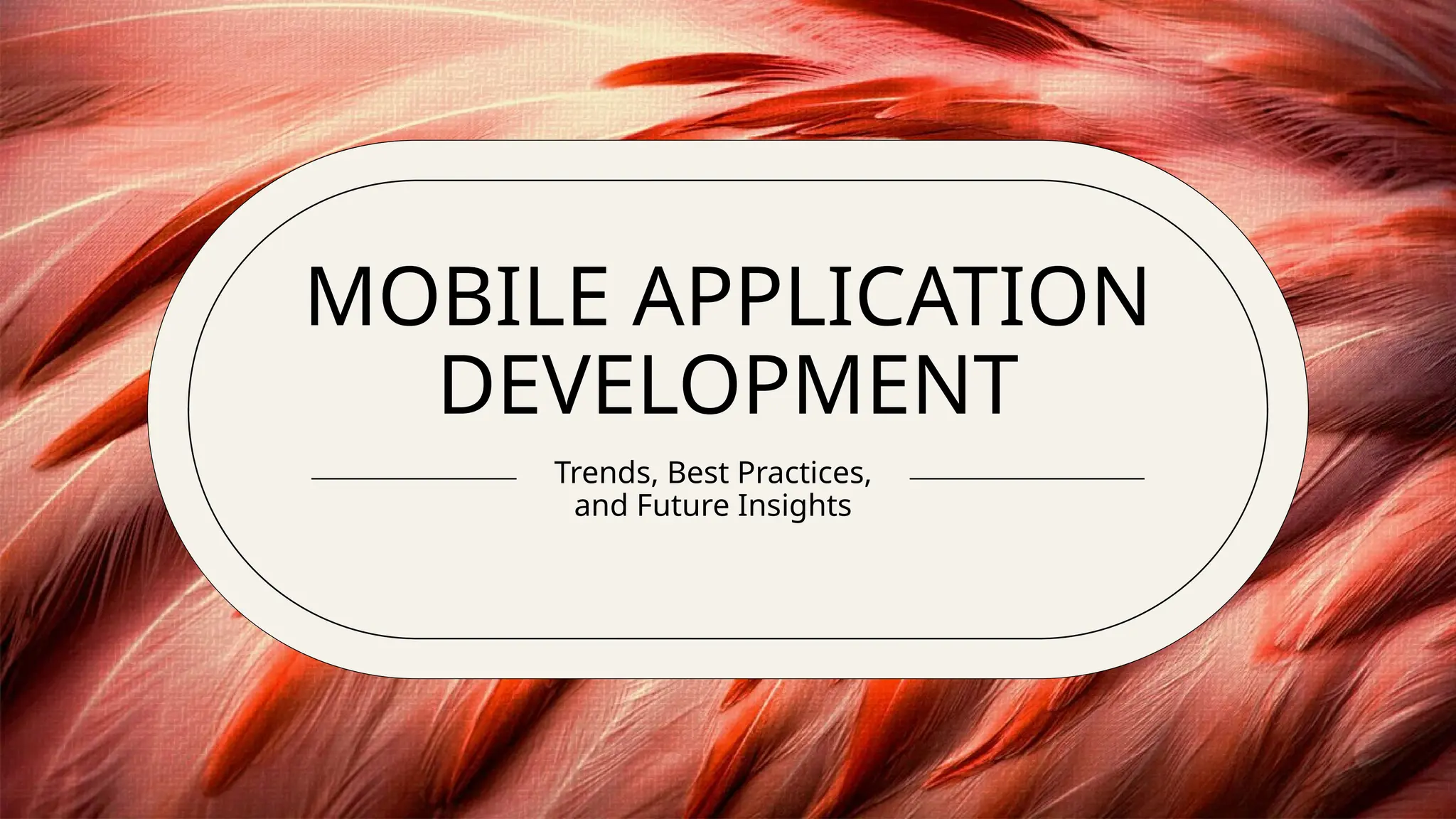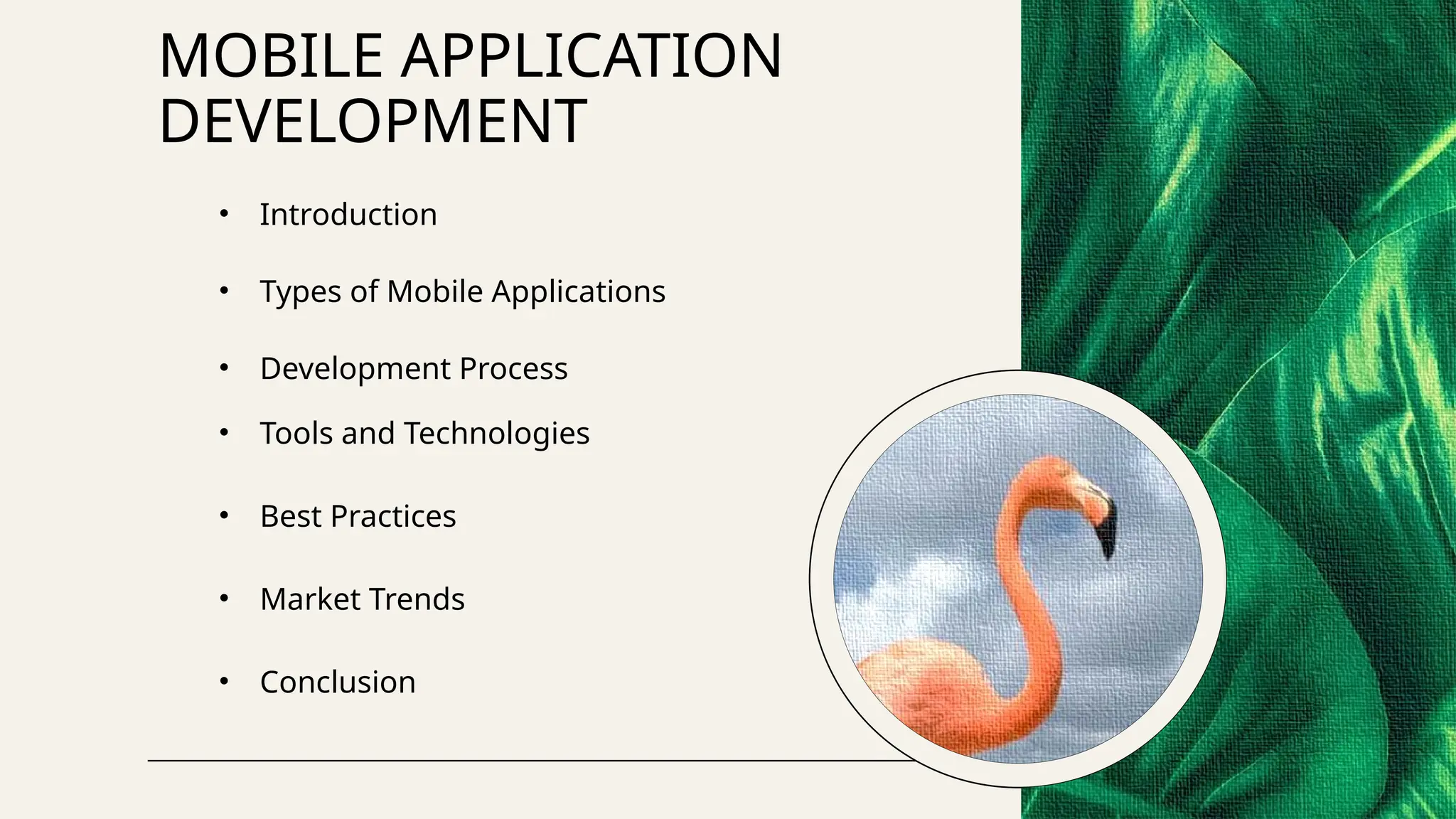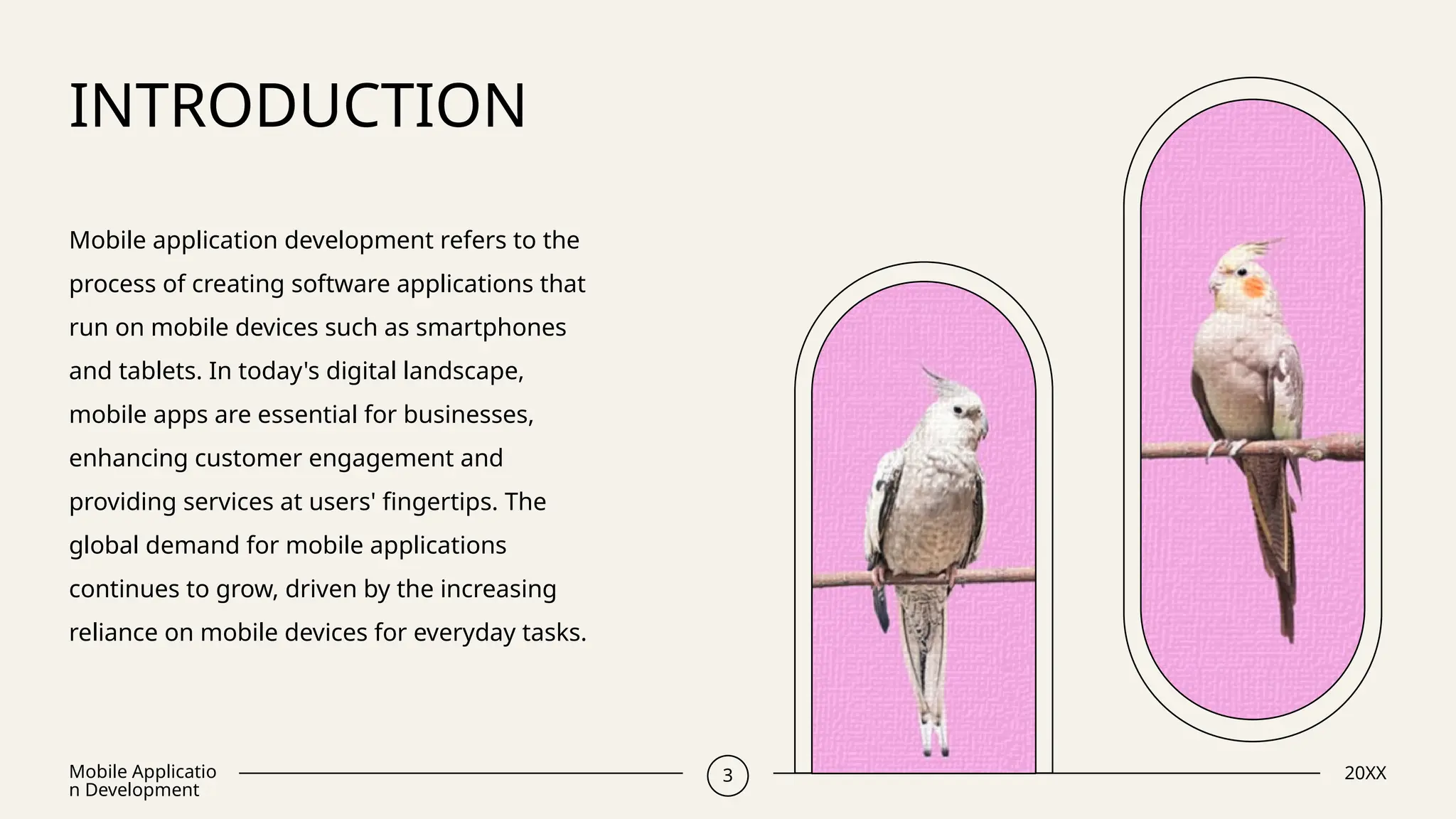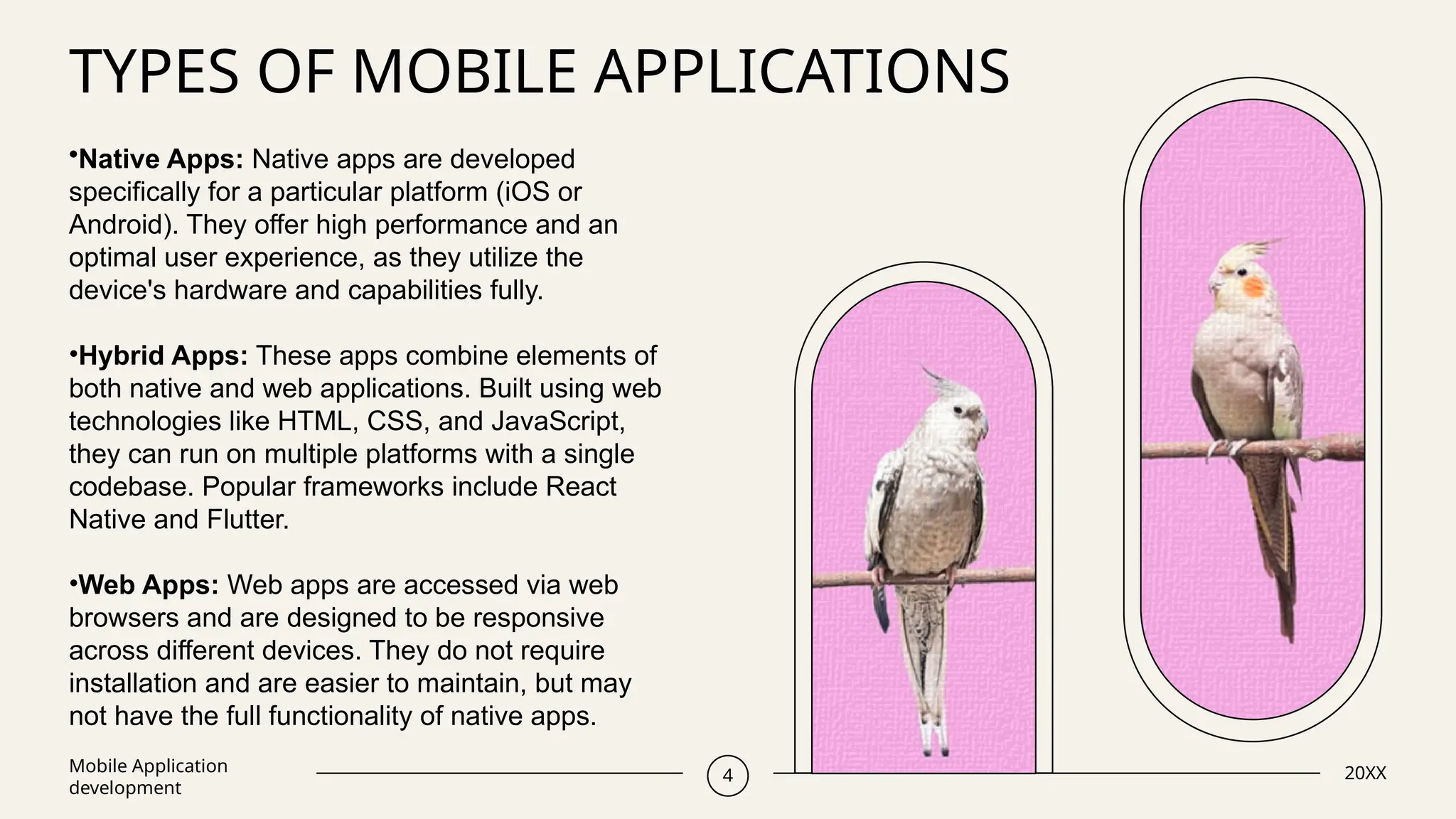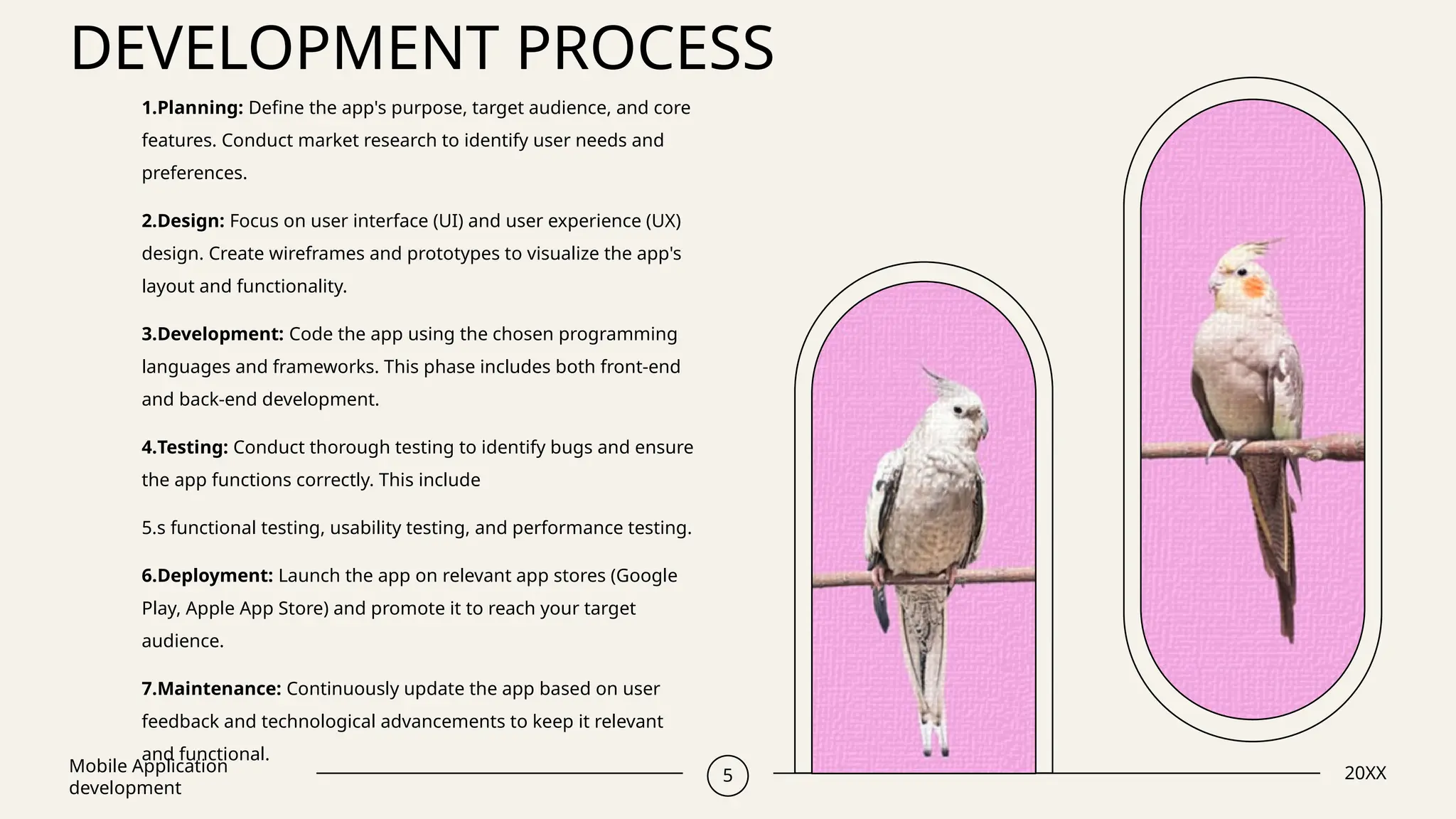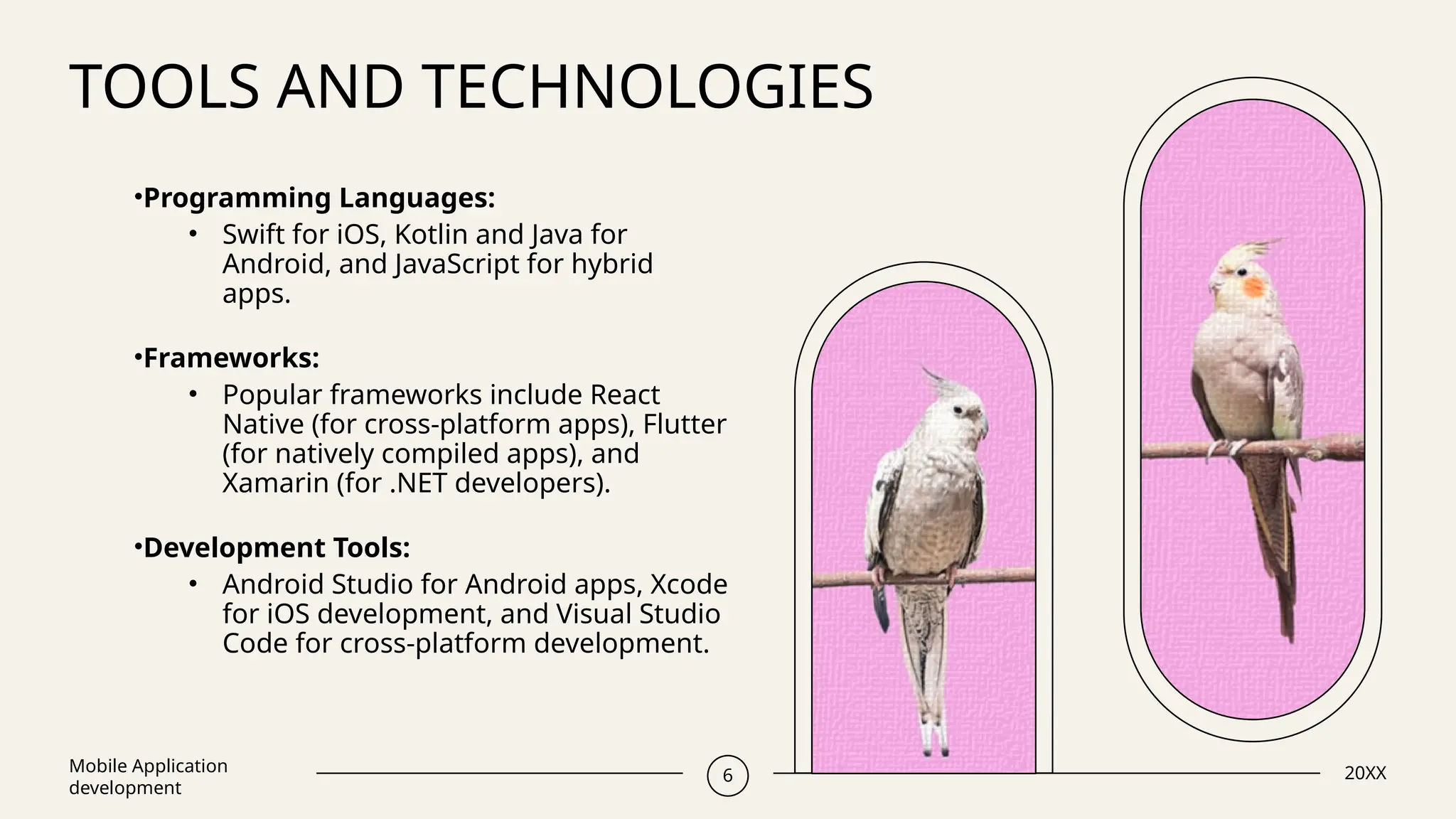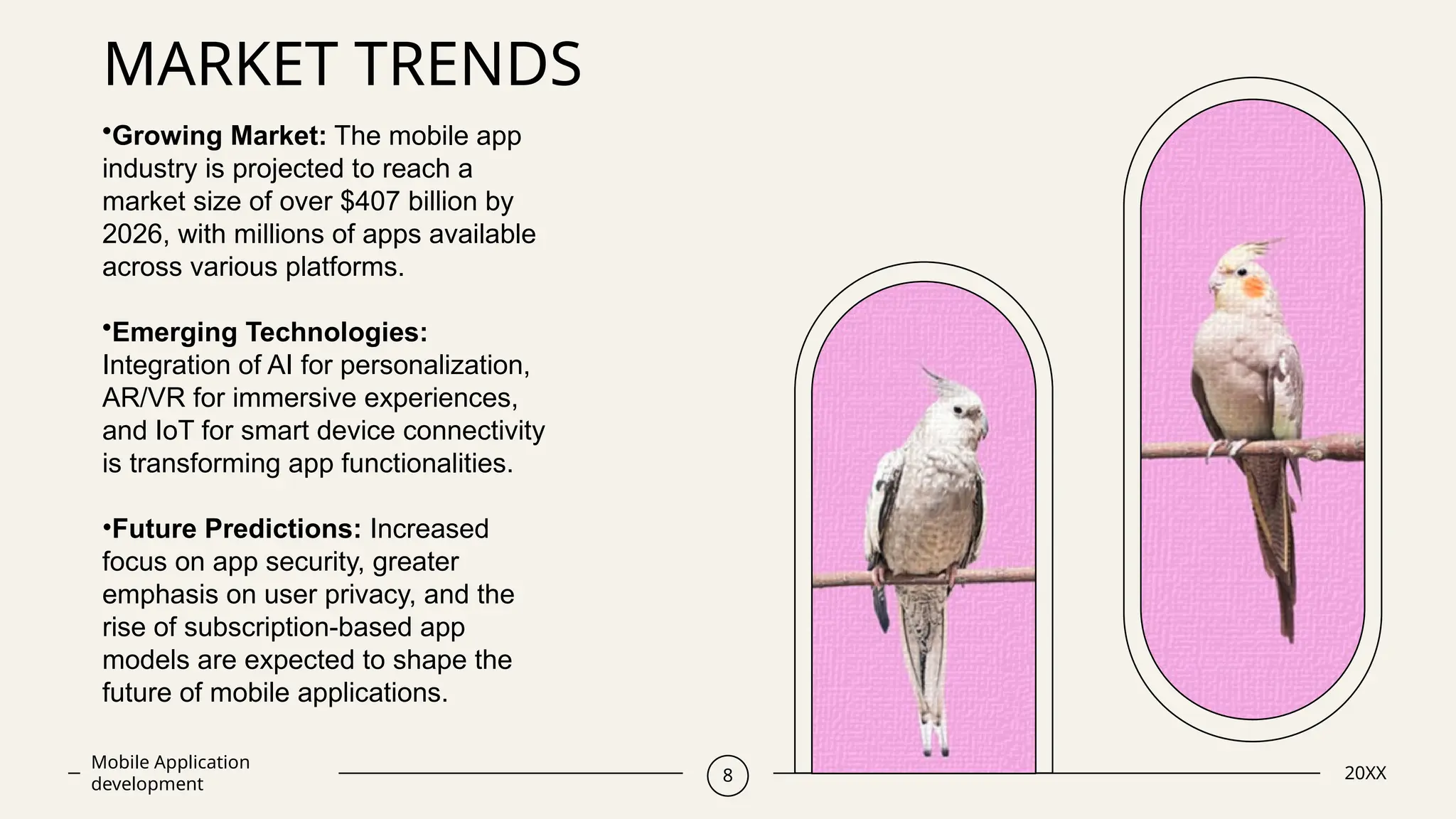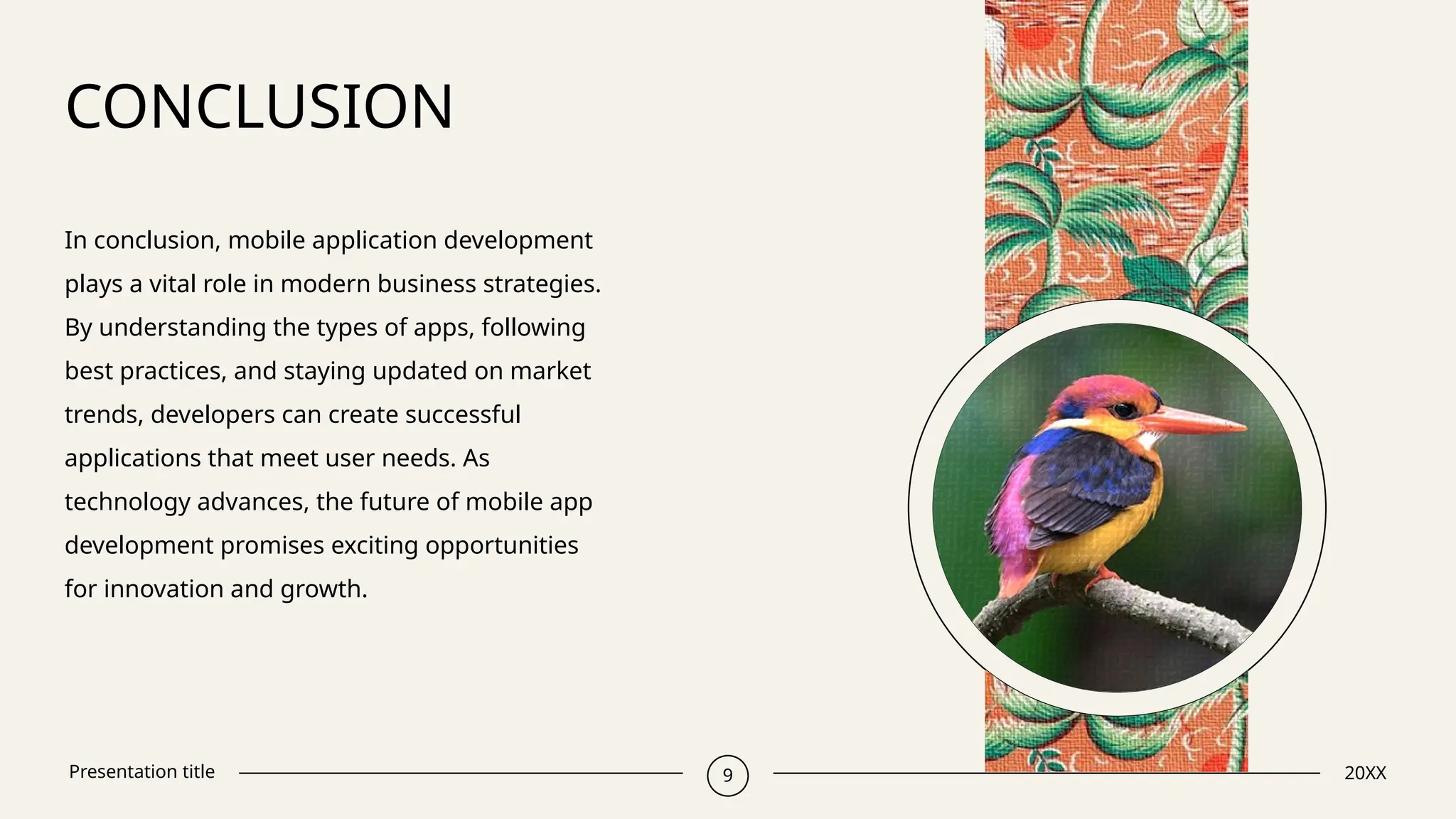The document outlines mobile application development by discussing its types, development processes, and market trends. It highlights the importance of user-centric design, performance optimization, and security measures as best practices. The mobile app industry is expected to grow significantly, with emerging technologies and a focus on user privacy shaping its future.
